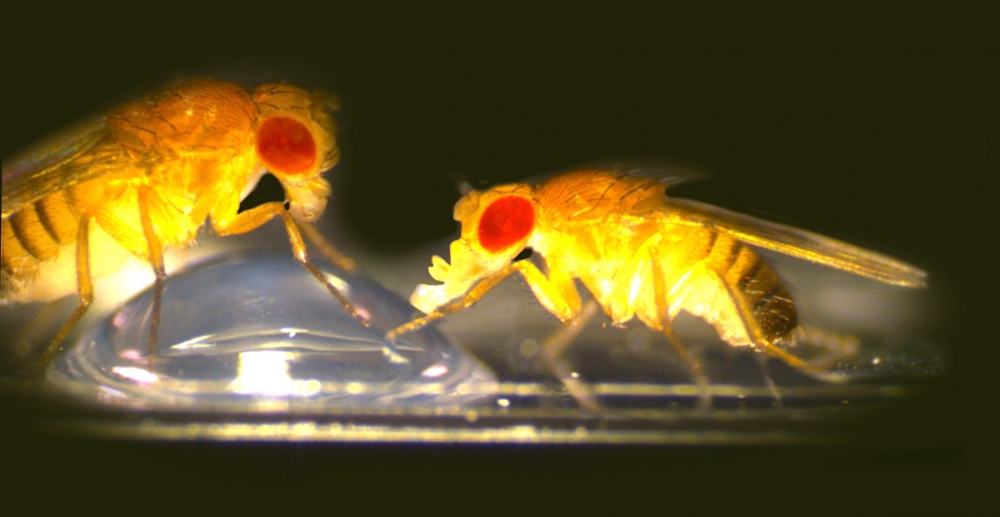
Accounting for Taste

Fruit flies (Drosophila melanogaster) are used as model organisms for studying a variety of physiological functions. The fly tongue includes 68 so-called “gustatory receptors” (GRs) that play important roles in sensing sugars as well as bitter compounds. Nonetheless, determining which combination of GRs contributes to detecting a particular noxious compound remains difficult because they are composed of many subunits.
Now, UC Santa Barbara’s Craig Montell and colleagues have identified three fruit fly GRs required for a response to the noxious amino acid L-canavanine. The principal nonprotein amino acid of certain leguminous plants such as clover and alfalfa, L-canavanine is used as an insecticide and is toxic to fruit flies. The researchers’ findings appear in the journal Nature Communications.
For the past decade, scientists have been seeking to establish whether any gustatory receptors (GRs) in fruit flies that sense bitter and other aversive compounds are cation channels. These channels, which have the ability to open and close in response to chemical or mechanical signals, activate neurons by letting in positively charged molecules such as calcium or sodium.
“Our finding that insect GRs collaborate to form a cation channel is of interest because it will set the stage for identifying safe and cheap chemicals that deter insects from biting,” explained co-author Montell, the Duggan Professor of Neuroscience and Molecular, Cellular, and Developmental Biology. “Fruit flies avoid L-canavanine and now we know the identities of the set of receptors that activate a neural pathway that gives a stop-feeding signal.”
According to Montell, the team’s discovery may one day be applied to disease- carrying insect pests such as mosquitoes. Because the GRs that provoke insect aversion to L-canavanine are cation channels, scientists will now be able to conduct high-throughput chemical screens to find equally aversive but safer and less expensive chemicals to use to prevent insects from biting people and spreading disease.
Some fruit fly GRs are conserved in insect pests, and in those cases they are likely to have similar functions in disease-carrying mosquitoes. “Even if the related GRs in mosquitoes are fairly different, we now have the conceptual framework to demonstrate that their GRs are also ion channels,” Montell said. “We wouldn’t actually use Drosophila GRs to do chemical screens. We would use GRs in insect pests that we want to keep away.”
Once an effective chemical target has been identified, it could be developed as a secondary insect repellant. While it would not prevent insects from landing on skin, chemicals that activate GRs that ordinarily cause a stop-feeding signal could prevent mosquitoes from biting.
“The insects would sense an aversive chemical and be disinclined to take a bite,” Montell explained. “Combined with insect repellants that interfere with olfactory attraction to humans, a GR-targeted repellant could offer a second line of defense.”



